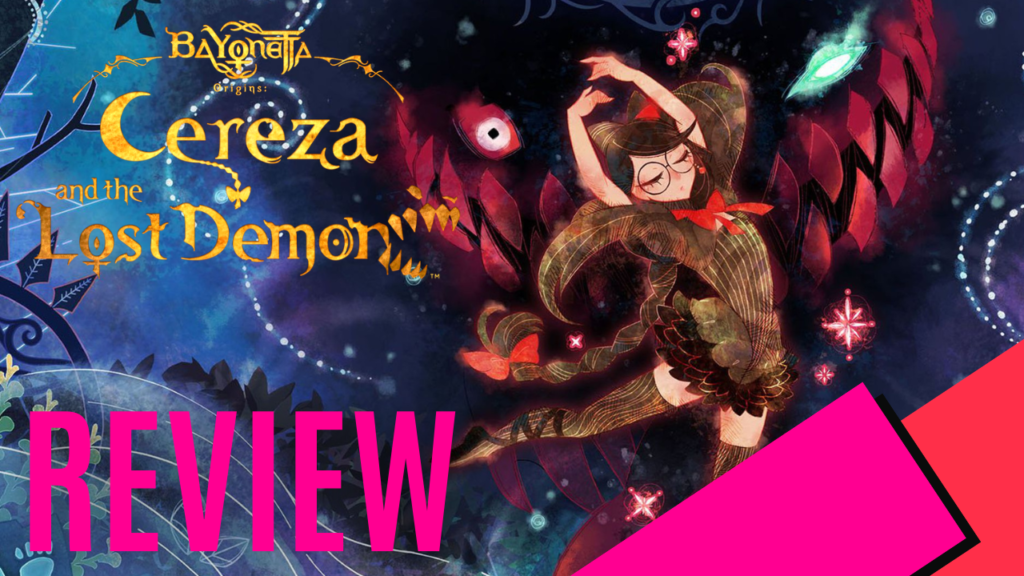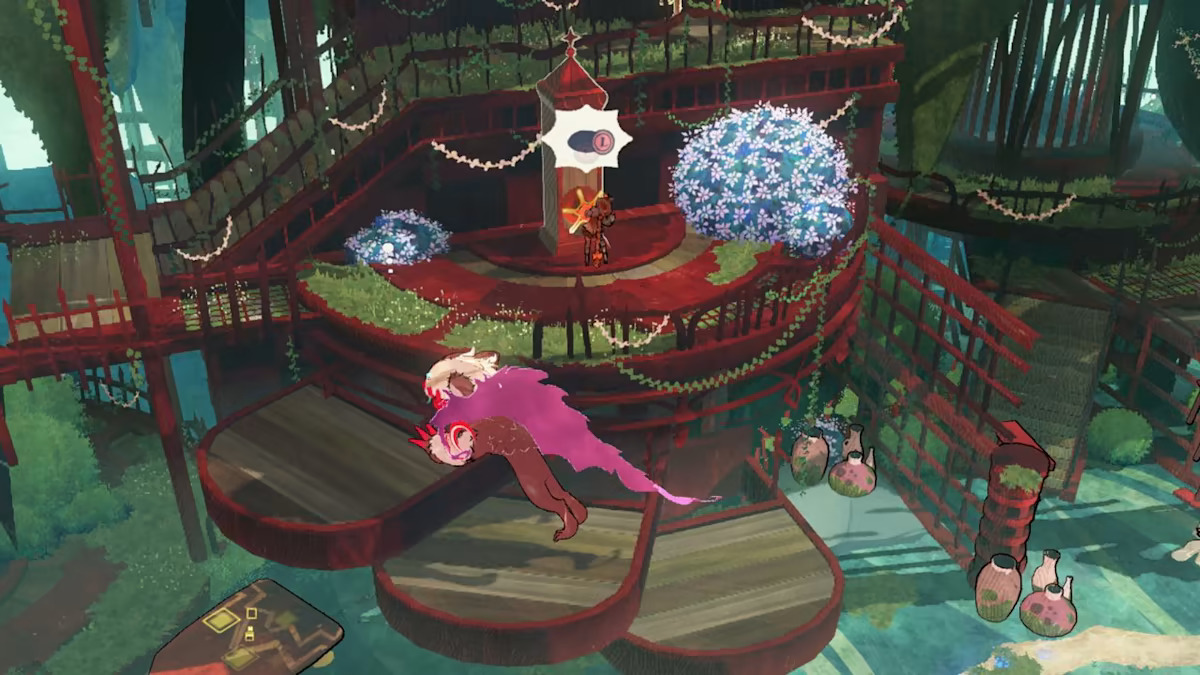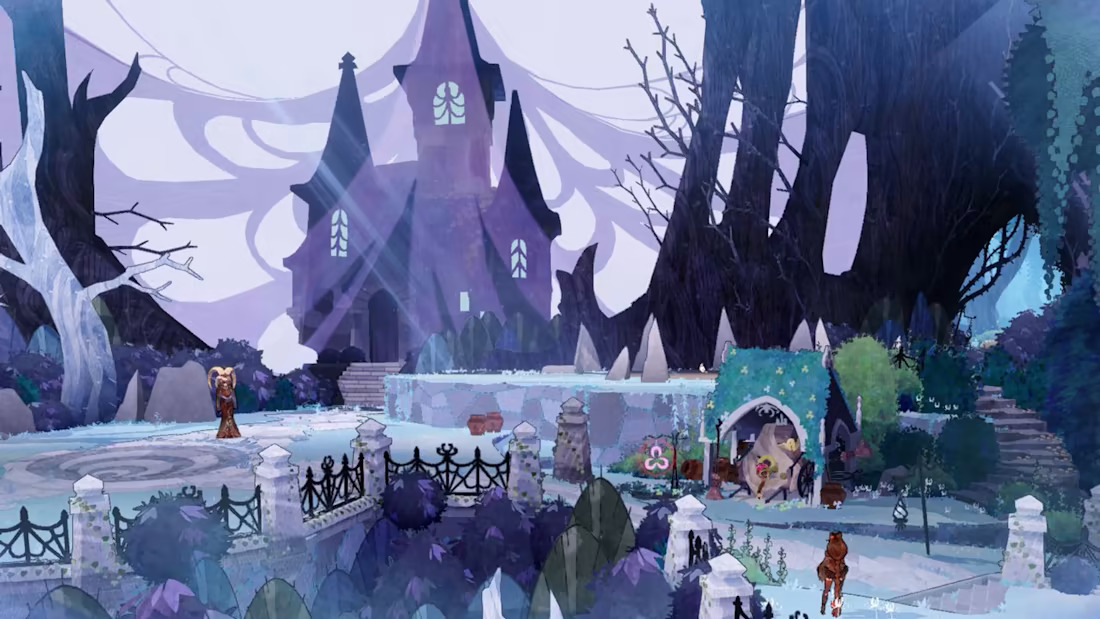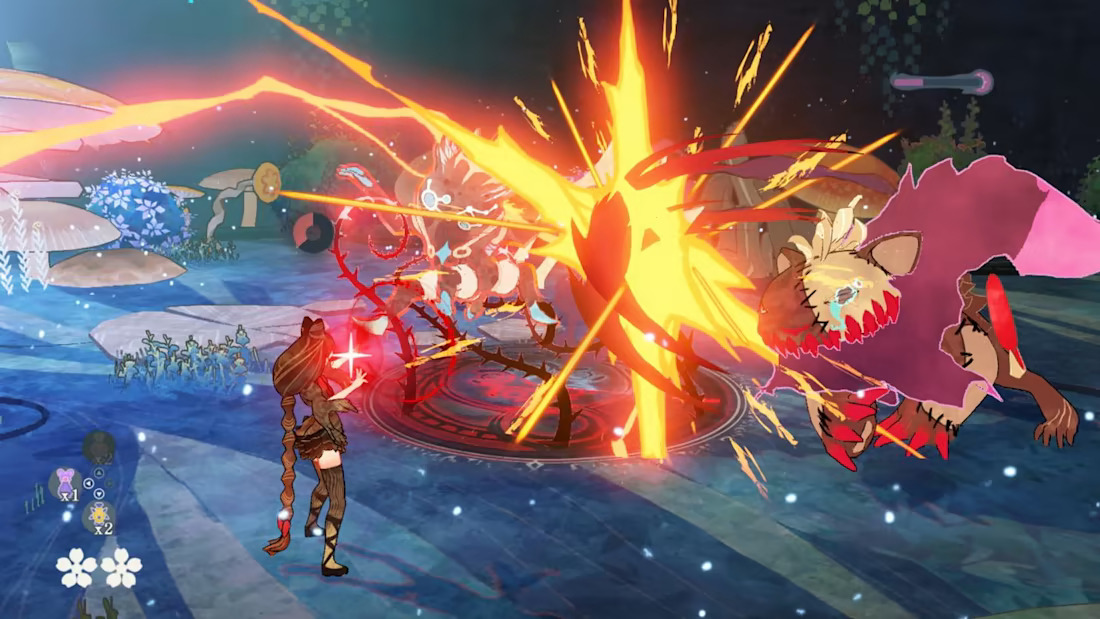
The first thing that comes to mind for most gamers familiar with the ‘Bayonetta’ series would be high-octane thrills, gun-totting heroism, and general over-the-top display of action. The fine folk over at Platinum Games are here to offer a new experience, however, with the cosy game mentality taking centre stage. ‘Bayonetta Origins: Cereza and the Lost Demon’, is a new tale of a young witch that is looking to make her mark and save her mother in the process.
There are two prominent departures from the trilogy of games before this release, the first being the storybook element being used to carry this tale and the second being the water-inked art style. In a charming and endearing manner, Cereza’s origin is presented with turning pages as the artwork fades in and out as if dripped onto the parchment.
Born out of a forbidden love, Cereza’s mother is locked away and herself being ostracized and shunned despite her sweet and inquisitive personality. With the ever-looming fear of her mother being lost forever, she braves the dark Avalon Forest with nothing more than her stuffed toy Cheshire.
It wouldn’t be a Bayonetta game without a splash of magic and a dash of demons and these both come into play when Cereza’s summoning spell goes sideways. She managed to summon a demon but at the expense of her stuffed toy, Chesire, becoming the host of said demon.

The inexperienced witch must therefore work side by side with the demon to survive the gruelling forest as each of them can cover what the other cannot. With Cereza’s ability to summon thorns to tie down monsters while her stuffed toy transforms from the cuddly bundle of joy into a hulking beast that towers over Cereza, powerful combos, and battle strategies become the new norm.
The artwork was quite fitting for a Nintendo exclusive and was able to define its own style while retaining the characterisation of the Bayonetta franchise. A vivid and distinguished water colour palette brings the haunting forest to life without making it overtly scary either. Cereza herself was able to conjure crimson-coloured wisps and lashes of magic while her now giant Cheshire would cause comic book-style slashes on the screen as he would tear his opponents to pieces.
Even the world itself was teeming with personality as the cold and dreary blues would drown out the atmosphere until you broke free of the alternate planes of existence to the bubbly and cheerful warmth of the forest. Personally, the docked version seemed to maintain a more stable presentation than the slightly blurry performance of going handheld but artistic intent overpowered any shortcomings.
To put a neat little bow on the entire package the soundtrack, voice acting, and overall sound design has the largest impact of them all. The orchestral experience sells the whimsical storybook narration as the poetry rhythm of the voice-over told the overview of events as they unfolded. Cereza herself was unsure of herself at times, only to rise up to defend a demon she hardly knew and remained a positively sparkly-eyed individual despite being an outcast her entire life.

Sitting in the safe haven where you can save your game had leafs rustling, birds chirping and soft melodies that could carry you off to sleep while the set piece boss encounters were exhilarating affairs. In a sneaky manner of speaking, if you have the joy cons available to split between two people, this can play as an unofficial co-op game. The two characters are effectively given half of the controller each as the left thumbstick, L and LZ buttons control Cereza while the right thumbstick, R and RZ buttons control Cheshire.
Playing solo, however, see you controlling both characters at the same time which is usually no problem but did lead to some confusing and embarrassing moments of focusing intently on one character while the other walks continuously into a wall. As mentioned earlier they play off each other’s strengths though, which finds Cereza as a bit more of a support/set-up role that traps the Faeries and Cheshire uses various elemental or straight physical attacks to finish them off.
There was always something to do while exploring the areas, the branching paths offered a sense of exploration while keeping the confines of the map fairly linear. Environmental puzzles would continually give reason to split up momentarily, backtrack when a new ability or element was unlocked or cause you to think outside of the box.

These were often low-stakes obstacles that didn’t necessarily challenge you in any given way but did support the bonding journey between you and Cheshire. For those that were chasing a combat challenge, the Tír na nóg replay-able missions offered quick snapshots at honing your skills with helpful resources as rewards.
The ecosystem of the game feeds directly back into your split currency that could be used to upgrade both characters through their own skill trees. The more you explored or challenged yourself, the more you could invest in either potion creations to restore health and magic or simply stock up for future combat upgrades.
There is a rather in-depth help system instead of the standard easy, medium or hard difficulty setting, this lets you tune the damage you take, magic usage, enemy strength or whether the timed mini-games would auto-complete. Taking that into account would then determine how much the additional exploration will become necessary or rewarding to the player.
Bayonetta Origins: Cereza And The Lost Demon is a departure from previous endeavours but firmly established itself as a worthy entry and an even better standalone experience. The cosy nature with adjustable difficulty makes this entry a pleasure to experience and the hidden or unintended co-op with split joy cons can elevate this into a fantastic outing for a family game night.

The Good
- Musical score is beautiful and impactful full
- Water colour art style sells the story book feeling
- Unintended co-op for split joy cons was a bonus
- Easy to digest story
- Adjustable difficulty options were extensive
- In game economy was well balanced
The Bad
- Dual stick controls can be a learning curve
- Environmental puzzles were plentiful but not greatly impactful








